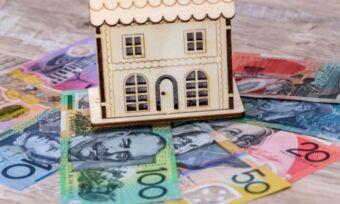Negative gearing trap: What to consider before making the choice

Many Aussies like the idea of negative gearing but is it all it’s cracked up to be? Here are the numbers to think about before jumping in.
Ben Johnston’s Opinion
When it works well, negative gearing can be good. As I see it though, the problem is that the benefits are often overstated and the downsides often understated. Negatively gearing a property generally requires substantial debt, therefore incurring interest, combined with other holding costs such as rates, insurance, repairs etc. This means that your outgoings are greater than the rental income leaving a loss, a negative, hence the term negative gearing.
At this point, you are losing money, in addition to tying up your borrowing power. This may affect your ability to borrow for other assets such as your own home. What this means is that you need capital growth to make the exercise of negative gearing worthwhile, and these capital gains need to outweigh the losses made through negative gearing.
Capital growth and negative gearing
You see, negative gearing only works when the asset you are holding is going up in value. If it isn’t then you are genuinely losing money. One of the most common myths for many property investors is that they think that “the tenant is paying my mortgage” and “I get tax refunds for the amount of money lost through negative gearing”. At best, the rental income from tenants is merely helping you cover the holding costs, whereby the tax saving you get can at best be viewed as clawing back only a portion of what you have actually lost.
With record low interest rates at present, the impact of negative gearing for many investors has diminished substantially anyway as the cost of holding a property, relative to the rental income, has declined. But is this a good thing? It means that the negative gearing losses are lower and therefore lower tax benefits, doesn’t it? Well, the short answer, in my opinion, is yes it’s a great thing!
Prospective property investors should focus on two main things when considering their purchase: capital growth and rental income. Both should be at the forefront of their decision making. The amount of times in my 25 years of advising in this space that clients have begun with, “Should I buy a property and negative gear it so I can reduce my tax” is frightening, and my answer has remained consistently similar: “Only if you believe the property you are looking at buying has the potential for capital growth and it has strong rental yields, view the tax you save from negative gearing as a partial benefit and a way to recoup only a percentage of what you have lost.”
The numbers to think about
I follow this up with a simple question that simplifies my opinion on negative gearing. “Would you rather lose $10,000 and the government only give you back $4,700 (assuming the investor is in the highest tax bracket), or would you rather be given $10,000 but have to give the government back $4,700?” The answer is always that the client would rather be given money and pay the tax. As demonstrated here, if you lose $10,000 through negative gearing, the most you get back in tax is $4,700 meaning you are out of pocket $5,300. Again, negative gearing means you are genuinely losing money – unless you achieve capital growth.
Investors also need to be mindful that the impact of negative gearing through the tax benefit achieved, is directly determined by the individual’s marginal rate of tax, for example, an investor with a $200,000 taxable income with a $10,000 negative gearing loss saves $4,700 in tax whereas an investor with a $40,000 taxable income with a $10,000 negative gearing loss only saves $2,100 in tax.
I believe that a property investor needs to be fully informed about how negative gearing works. It can then potentially be a good way for people to grow their portfolios on the provision that capital growth and rental yield have been at the forefront of their decision making. Anomalies such as claiming depreciation on new buildings, or properties that have been substantially renovated, definitely skew the impact of negative gearing and provide additional cash flow assistance by generating larger tax losses through greater depreciation deductions.
However, investors also need to be wary of buying new just for this reason, as a new property generally comes at a higher cost therefore higher debt. Investors in new properties also need to be wary that they are not being enticed into buying new by advisers who are guiding them through self-interest rather than the best interest of the investor. Unfortunately, there have been many cases of this occurring in Australia as highlighted in the Royal Commission.
Main image source: fizkes/Shutterstock.com
 About Ben Johnston
About Ben Johnston
Ben Johnston is Managing Director of Johnston Advisory and has more than 25 years of experience in public practice, with knowledge and credentials both in finance and property investment. Ben holds a Bachelor of Commerce, a Fellow of Institute of Public Accountants, and Chartered Tax Advisor. He was named 2020 Member of the Year by the Institute of Public Accountants. You can follow Ben on LinkedIn.
This article was reviewed by our Editorial Campaigns Manager Maria Bekiaris before it was updated, as part of our fact-checking process.
The comparison rate for all home loans and loans secured against real property are based on secured credit of $150,000 and a term of 25 years.
^WARNING: This comparison rate is true only for the examples given and may not include all fees and charges. Different terms, fees or other loan amounts might result in a different comparison rate.
 Owner occupied
Owner occupied
 20% min deposit
20% min deposit
 Redraw facility
Redraw facility
Try our Home Loans comparison tool to instantly compare Canstar expert rated options.
The comparison rate for all home loans and loans secured against real property are based on secured credit of $150,000 and a term of 25 years.
^WARNING: This comparison rate is true only for the examples given and may not include all fees and charges. Different terms, fees or other loan amounts might result in a different comparison rate.







